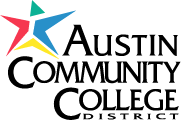As you know, the college is knee-deep in its guided pathways implementation. I want to bring you up-to-date on some of the developments in Student Services.
Because a primary intent of guided pathways is to help students identify appropriate coursework and stay on track to achieve their goals, we are fundamentally changing our advising/counseling model to focus on programs rather than courses. It’s a new way of serving our students designed to help them earn a credential on time while avoiding extraneous credits.
Following is a summary of what we’ve been working on so far to improve advising and counseling processes and create systems for timely and appropriate interventions.
Advisor and counselor roles
Student Services advises approximately 35,000 students each fall. Our current generalist approach to helping these students not only makes little distinction between the services advisors and counselors provide, it requires them to be knowledgeable on 180 academic pathways.
Beginning in fall, advisors and counselors will have assigned caseloads and clear distinctions between their services. Advisors will serve new students and walk-ins with “low risk” characteristics. They’ll also be assigned to work with full-time first-time-in-college students. They will help students with goal-setting and general educational planning.
Counselors will serve returning students with “high-risk” characteristics. They’ll also provide crisis counseling, coaching, and career counseling, and assist with programing for drug and alcohol prevention, suicide prevention, healthy relationships, etc.
Generally, advisors will focus on academic issues while counselors will help students dealing with life struggles.
Generally, advisors will focus on academic issues while counselors will help students dealing with life struggles.
There are numerous advantages to this approach. Students will have a consistent point of contact for advising and counseling at each campus. Advisors and counselors will have more manageable caseloads and provide more personalized, contextualized assistance. With the planned addition of 15 advisors, we will have a student-to-advisor ratio in line with the 350:1 ratio recommended by the National Academic Advising Association. We expect a 250:1 student-to-counselor ratio.
Advisor and counselor assignments
Our 39 existing advisors will be assigned to one of three clusters within the college’s defined 10 Areas of Study. Counselors will also be assigned accordingly. Right now we’re working to assign advisors to Areas of Study only. Next, we will determine how to assign student caseloads and what protocols to follow for student interventions
Retention and Intervention managers
To augment this advising and counseling structure, we’ve converted four open counseling positions to retention and intervention manager positions. We know that engagement, rather than demography, is a higher predictor of student success. These managers will use predictive analytics provided by Illume along with institutional data to measure and predict student success and engagement in real time. We’re also developing processes and procedures for tracking interventions. This will allow us to be proactive with students who are struggling and to provide support that could prevent their withdrawal.
Our guided pathways implementation will not happen all at once and will evolve. Transformative change often requires changes in routines and even mindsets. It takes courage to move and lead in new directions. We may encounter differing perspectives along the way, but that’s what will help us build solid and sustainable systems. At the heart of all of this is our students. The Student Services Division is eager to work with faculty and staff around the college to help them succeed.
Thank you for all you do!
Virginia
Tags: advising, counseling, From the SSVP, guided pathways
Back to Top

By Pam Thomas April 20, 2016 - 2:22 pm
Virginia:
These are some amazing and well thought out plans. You are right on track.